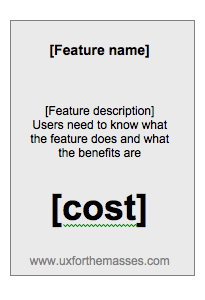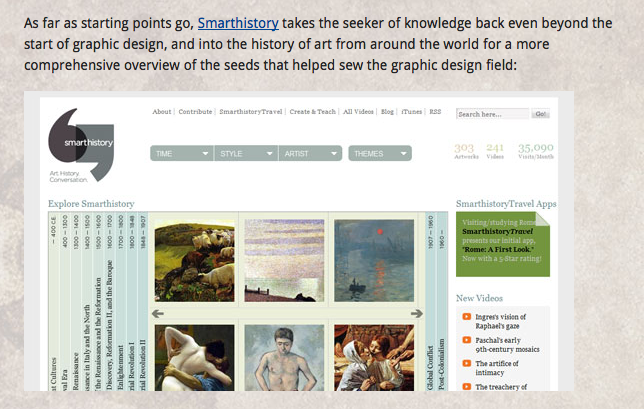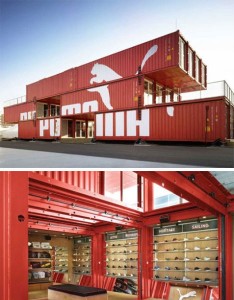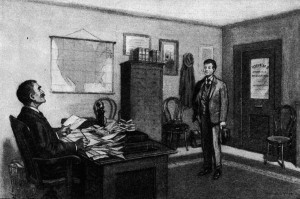
(Major Hat Tip: This helpful idea and downloadable comes from UXforTheMasses.com.)
 The question is often faced of what to implement and when. How do we churn through a backlog of work (in this case design and interface features) in the most effective way possible. One suggestion is making prioritization a game.
The question is often faced of what to implement and when. How do we churn through a backlog of work (in this case design and interface features) in the most effective way possible. One suggestion is making prioritization a game.
Buy-A-Feature
The “Buy-A-Feature” game requires a committee of decision makers to, um, make decisions. How often have you asked “what is important now” only to be told “all of it”? Money and time are limited. Politics may kill the project. “Buy-A-Feature” may be the way out.
As [UXforTheMasses.com] has already mentioned the ‘Buy a feature’ design game is a great way of getting people to choose the features that they would like to be available for a given product. Like all the best design games it’s very simple to play, but provides incredibly useful feedback. … ‘Buy a feature’ is a great means of exploring which features people are likely to find desirable in a product and why. Will someone blow their entire budget on a few monster features or instead buy lots of smaller ones? It can be useful for helping to determine which features to include for a product, for prioritising a product backlog (i.e. feature set) and for exploring the initial requirements for a product. After all, there’s no point in designing a fantastic new feature if it’s never going to be used by people in the first place.
List Your Features
Before you can play “Buy-A-Feature” you must gather and list everyone’s desired features and ideas. Committee members will have different ideas about what features they would like included in your project. Further,
…every product will be different, but the list might include:
- Features that have been suggested by users
- Features that have been implemented by rival products
- Features that have come out of user research
- Features that have been identified as desirable during a phase of market research.
Be ruthless in your search for features and ideas. You want every possible idea on the table to avoid working backward to shoehorn in someone’s cousin’s idea of a great new whatever because it wasn’t considered initially.
How to Play
These different features will take different amounts of effort to implement. Price that effort accordingly and list it on these handy feature cards from UXforTheMasses.com. Force committee members to collectively prioritize changes by issuing fake money and asking them to individually of collectively spend their small allotment on what they find most important. “By being mean and only providing enough cash to buy a limited set of features players are forced to choose those features they most want.” Use the results to list order of priority and review it with the committee.
Voila!
Priorities determined! Get to work!







